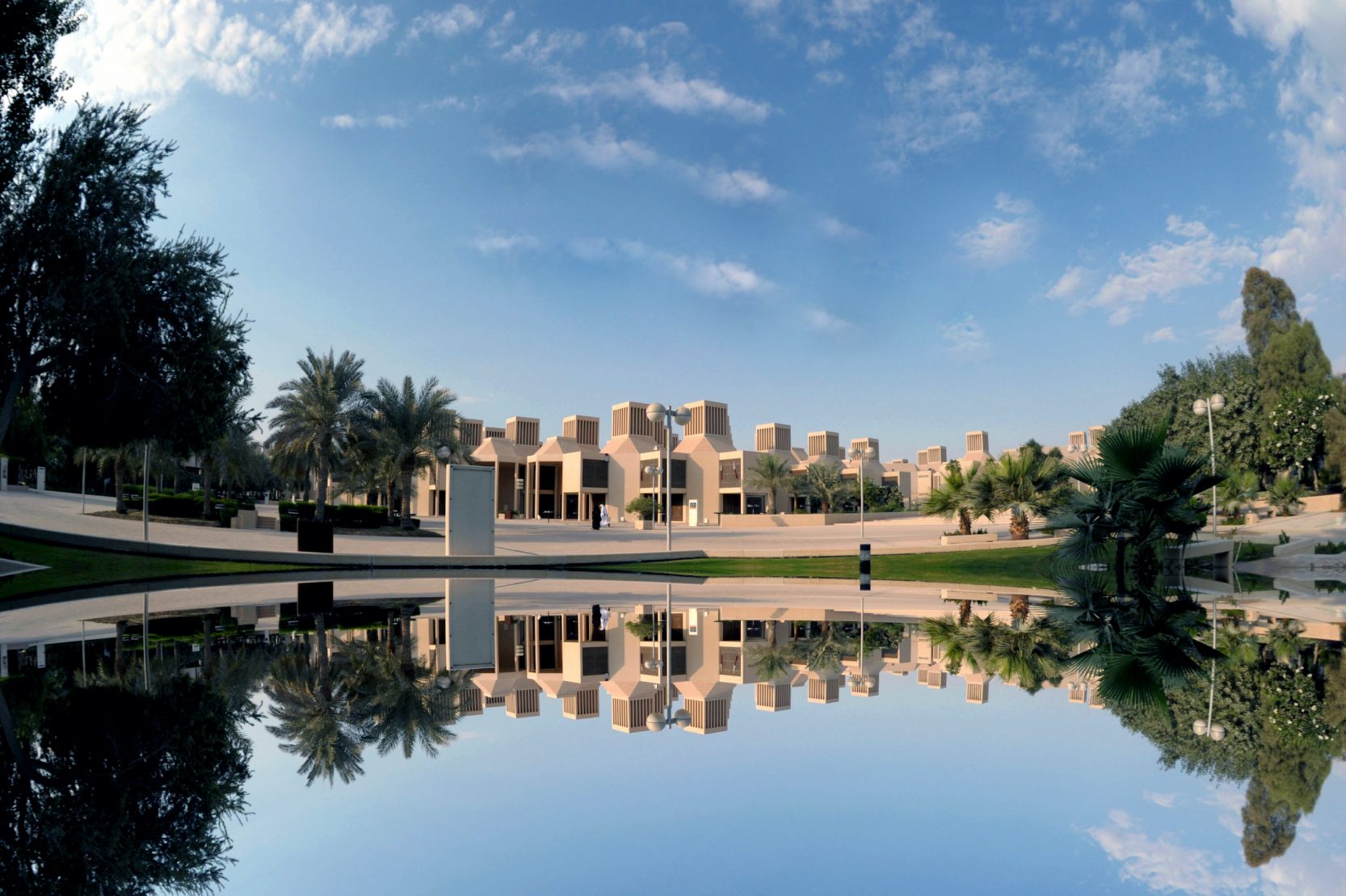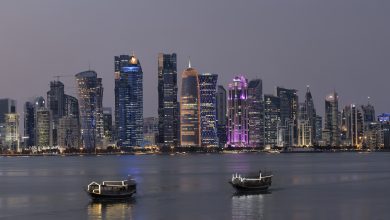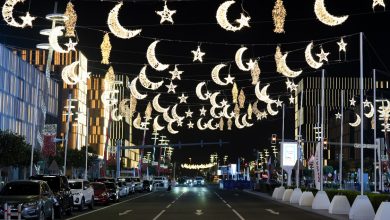QU President: University on Verge of Approving New Strategic Plan
رئيس جامعة قطر: الجامعة على مشارف اعتماد خطتها الاستراتيجية الجديدة
QNA
Doha: HE Qatar University (QU) President Dr. Hassan Rashid Al Derham said that the university is on the verge of approving its strategic plan for the next phase in line with the Third National Development Strategy (2023-2030).
His Excellency was giving a speech to celebrate the graduation of its 46th batch of students.
“We are on the verge of approving the university’s strategic plan for the next phase, in line with the Third National Development Strategy (2023-2030),” His Excellency said.
Dr. Al Derham said that QU throughout its history since its establishment in 1977 until today, Qatar University has had the honor of contributing to achieving the goals of the state and its leadership’s aspirations through its distinguished academic formation, institutional culture, its outstanding scientific and research capabilities, preparing generations of competencies and experiences.
“Today, we celebrate the 46th batch of Qatar University graduates who joined a new group of 3913 male and female graduates to join the ranks of the over 64,000 graduates of the university since its establishment,” he added.
He said that Qatar University works towards achieving and sustaining three integrated goals; quality in the educational process, excellence in scientific research, and advancement in institutional work and administrative efficiency. He added that one of the fruits of these efforts was the university’s achievement this year of the highest level of institutional accreditation, WSCUC, Senior College and University Commission, one of the world’s leading academic accreditation institutions.
At the international level, Qatar University has continued to make progress in the global university rankings this year. According to the QS World University Rankings, the university has been ranked 208th in the world and 226th by the Times Higher Education World University Rankings. Qatar University has also achieved second place among Arab universities in both rankings.
He noted that the university will host two important conferences this year; the General Conference of the International Association of Universities, which was founded in 1950 and includes more than 600 universities from over 120 countries, in addition to hosting the International Conference on Interprofessional Education and Collaborative Practice (IPECP), All Together Better Health (ATBH). Both of these conferences will be held for the first time in the Middle East and North Africa region.
قنا
الدوحة: قال سعادة الدكتور حسن راشد الدرهم رئيس جامعة قطر إن الجامعة على مشارف اعتماد خطتها الاستراتيجية للمرحلة المقبلة بما يتسق مع استراتيجية التنمية الوطنية الثالثة (2023 – 2030 ).
وقال سعادته في الكلمة التي ألقاها اليوم في حفل تخريج الدفعة 46: إن جهود كافة قطاعات الجامعة وكوادرها أثمرت نجاحا في تحقيق غالب الأهداف المنشودة للخطة الاستراتيجية السابقة، ونحن على مشارف اعتماد خطة الجامعة الاستراتيجية للمرحلة المقبلة اتساقا مع استراتيجية التنمية الوطنية الثالثة (2023 – 2030).
وأكد سعادة الدكتور الدرهم أن جامعة قطر وعلى امتداد تاريخها ساهمت في تحقيق غايات الدولة، وتطلعات قيادتها، عبر تكوينها الأكاديمي الرصين، وثقافتها المؤسسية الراسخة، ورصيدها من القدرات العلمية والبحثية المتميزة، وإعدادها لأجيال من الكفاءات والخبرات.
وتابع يقول “نحتفي اليوم بانضمام فوج جديد قوامه “3913” خريجا وخريجة؛ ليلتحق بهذا الركب المبارك من خريجي الجامعة منذ إنشائها، والذي فاق 64 ألف خريج وخريجة”.
وأكد أن النهضة الشاملة التي تشهدها دولة قطر على مختلف الأصعدة الاقتصادية والاجتماعية والسياسية ما كان لها أن تتحقق لولا فضل الله أولا، ثم الرؤية الثاقبة للقيادة الرشيدة، وذلك على خطى ما أرساه الآباء المؤسسون للدولة، ووفقا لاستراتيجيات واضحة الغايات والأهداف، وخطط تنفيذية تخضع للمتابعة والتقييم المستمرين.
وأضاف “أدركت جامعة قطر مسؤوليتها باعتبارها الجامعة الوطنية الأم ودورها كرافد رئيس لإمداد سوق العمل بالكفاءات اللازمة لتحقيق خطط الدولة التنموية، وكبيت خبرة تستفيد منه جميع قطاعات الدولة ومكونات المجتمع”.
وفي هذا السياق، أوضح سعادة الدكتور الدرهم أن جامعة قطر تبنت رؤية تتضمن مجموعة من الغايات النابعة من وعي دقيق، وإيمان عميق، بأهمية تحقيق أولويات الوطن، ومواجهة التحديات المحلية والإقليمية في إطار من التواصل مع الجامعات العالمية بكفاءة واقتدار.
وأكد أن الجامعة تعمل على تحقيق واستدامة ثلاث غايات متكاملة وهي: جودة العملية التعليمية، وتميز البحث العلمي، والارتقاء بالعمل المؤسسي والكفاءة الإدارية مما يعزز القدرة التنافسية للجامعة على المستويين الإقليمي والدولي.
ونوه بأن تحقيق تلك الغايات أثمر في حصول الجامعة هذا العام على أرقى مستويات الاعتماد المؤسسي من هيئة (الواسك) التي تعد إحدى أبرز مؤسسات الاعتماد الجامعي عالميا.. وقال “جاء هذا الاعتماد عبر سنوات من العمل الجاد المستمر؛ اجتازت الجامعة مرحلته الأولى مارس 2021، والثانية يناير 2022، حتى تم الحصول عليه فبراير 2023”.
وأشار إلى أن حصول الجامعة على الاعتماد المؤسسي يعزز التزامها بأداء رسالتها الوطنية في دفع عجلة التنمية الشاملة والمستدامة، واتساق معاييرها بشأن جودة العملية التعليمية وتميز البحث العلمي والكفاءة الإدارية مع أرقى المعايير الأكاديمية العالمية، وتضافر الجهود وتراكم الخبرات والعمل بروح الفريق الواحد لتحقيق التطوير المستمر، والتزامها بنقل هذه التجربة لمؤسسات التعليم العالي بالدولة بما يحقق ويعضد مفهوم التكامل بينها.
وعلى الصعيد الدولي، قال سعادة رئيس جامعة قطر إن الجامعة واصلت تقدمها ضمن التصنيفات الدولية للجامعات هذا العام لتحتل المركز 208 عالميا وفقا لتصنيف كيو إس العالمي، والمركز 226 وفقا لتصنيف مؤسسة تايمز للتعليم العالي، كما حققت المركز الثاني بين الجامعات العربية وفقا لكلا التصنيفين.
ونوه بأن هذا الاعتراف والإقرار بالمكانة التي تتبوؤها جامعة قطر كان موضعا للإشادة والتقدير من مجتمع التعليم العالي دوليا، الأمر الذي أدى لفوز الجامعة بشرف استضافة وتنظيم عدد من أكبر المؤتمرات العلمية دوليا.
ولفت في هذا السياق، إلى مؤتمرين مهمين تستضيفهما الجامعة خلال العام الجاري، هما المؤتمر العام للمنظمة الدولية للجامعات، ومؤتمر الاتحاد العالمي للتعليم والممارسات الصحية المتداخلة، واللذان يعقدان لأول مرة في منطقة الشرق الأوسط وشمال إفريقيا.
وفي ختام كلمته، حث سعادة رئيس جامعة قطر الخريجين على السعي جاهدين لرفعة هذا الوطن، والعمل بكل جهد وإخلاص لتقدمه.




